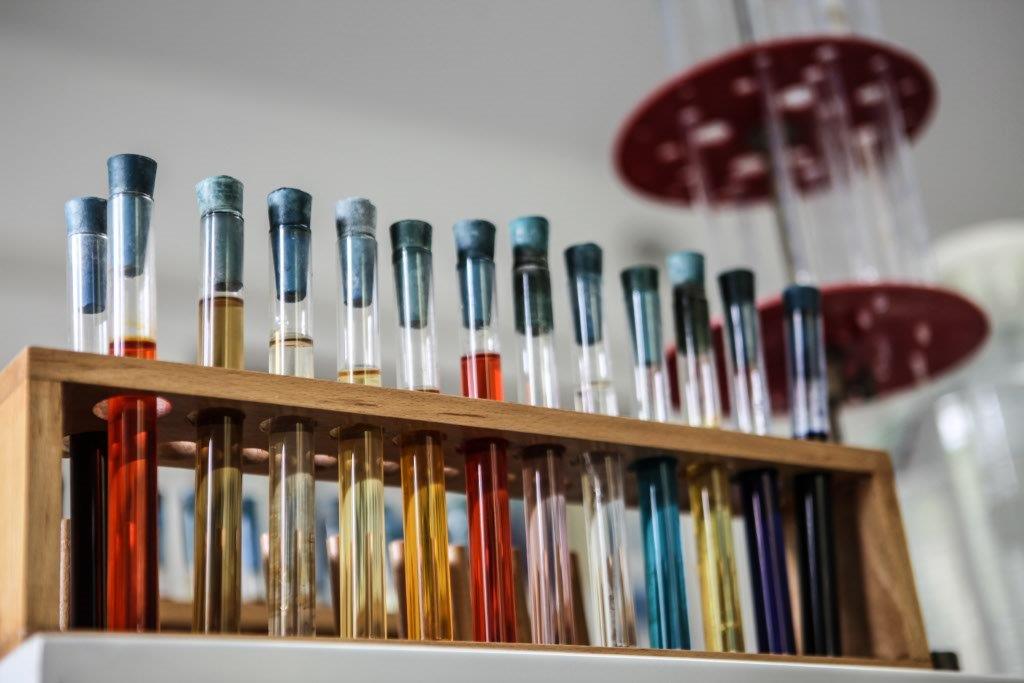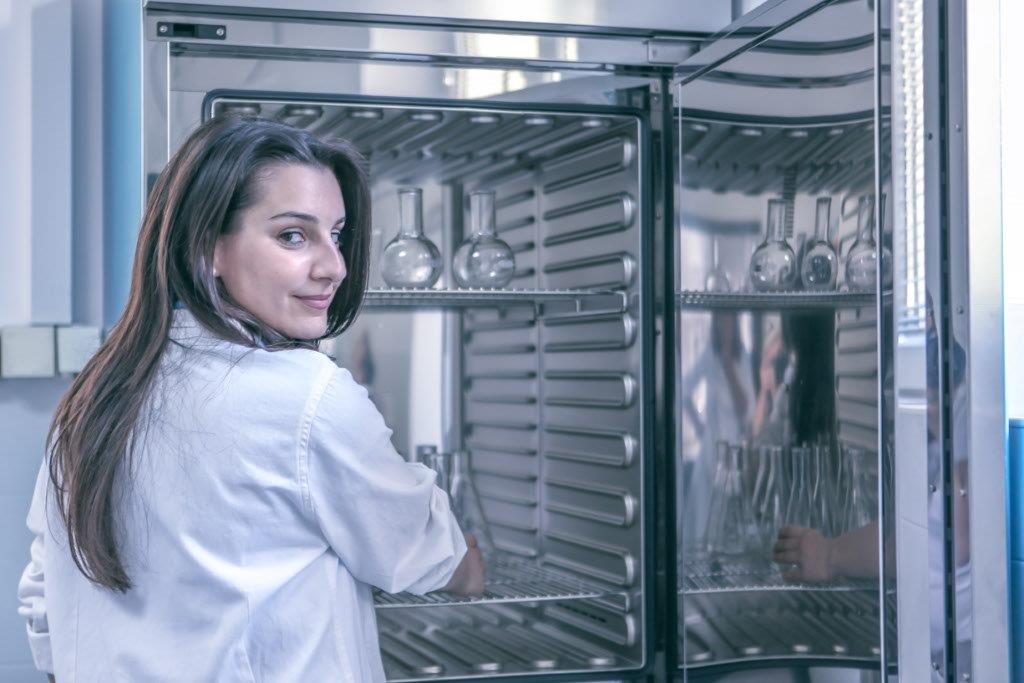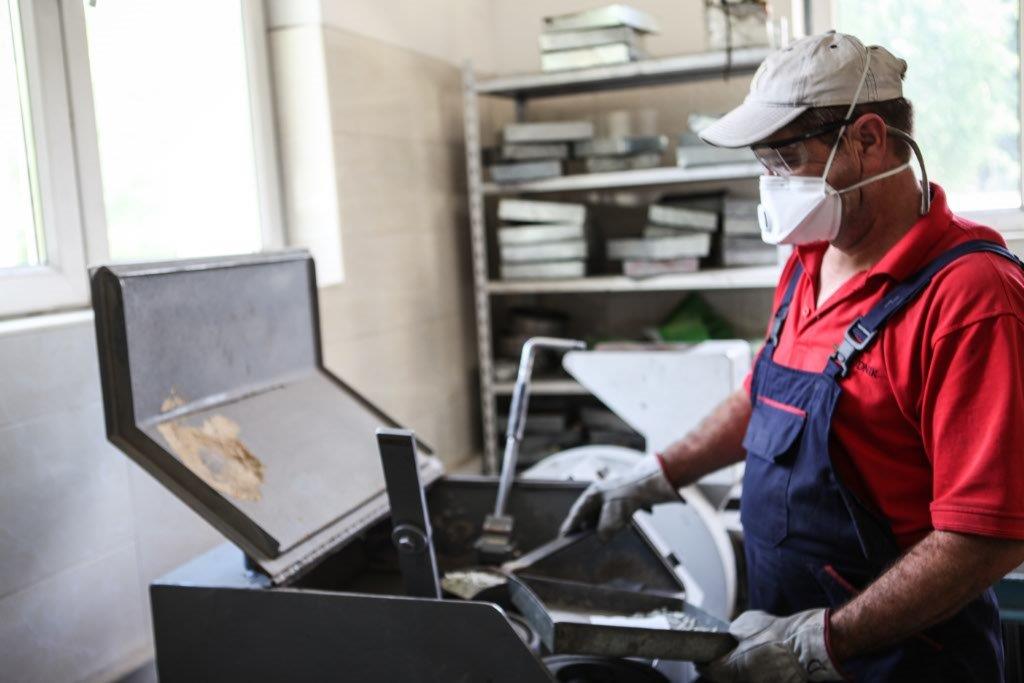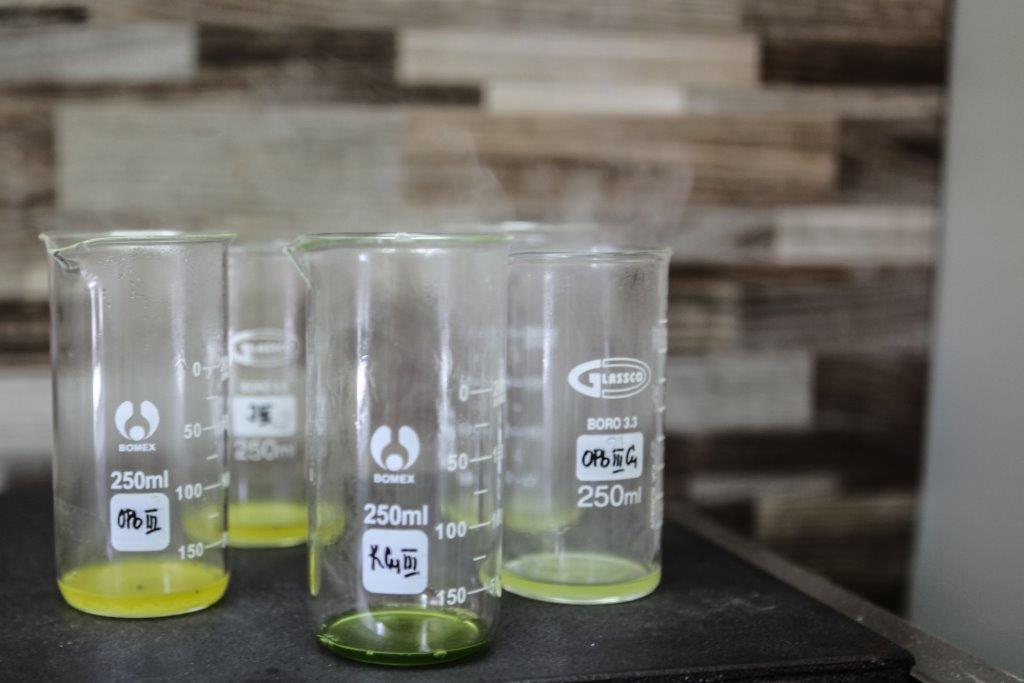Work unit Laboratory consists of departments for the preparation of samples for analysis and chemical department. A representative samples is formed in the department for preparation. Materials that are analyzed are samples of geological research, samples of ore that is processed, products of flotation concentrations and samples of final products – concentrates of lead, zinc and copper.

Samples of ore which are analyzed are in solid aggregate state. The preparation of samples begins by crushing the sample to size less than 5mm. This is accomplished by crushing in jaw, then in cylindrical jaw crusher. Such crushed sample is truncated on Johnson divider. Next, the sample is milled on disc pulveriser (grain size 0.150 mm) and analytical representative sample is obtained by milling on vibratory pulveriser (grain size 0.074 mm – sample milled to “dead”). Such milled sample is homogeneous and ready for analysis.
Samples of technological process of flotation are in form of pulp – a mixture of ore and water. Preparation involves filtering samples, drying, truncation and homogenization.
The elements that are determined are Pb, Zn, Cu, Au, Bi, Fe, S, Cd, As, Sb, Ni and also oxides of Pb, Zn, Cu with standard chemical analyses by applying volumetric and gravimetric methods and method of cupellation. All methods are standardized, checked and applied in most international laboratories.
To make the operations that lead to them as short as possible,and as many done analysis daily a new quantitative method of analysis was introduced in the laboratory “Rudnik” in January 2007 – Atomic absorption spectrophotometry, the ideal method for the analysis of ore.
Purchasing two new Perkin-Elmer atomic absorber with flame technology, which with its quality, holds a leading position in the global market of optical instruments manufacturers,we raised the leven of chemical analysis and accuracy of results.
Advantages of applying this method:
• Greater accuracy of analysis results is achieved
• From one sample preparation its possible to determine multiple elements
• The procedure for determining is simple – time savings are achieved
• Number of analysis daily is increased
With the development of the laboratory and the need for additional analysis of both ore and our wastewater, the laboratory is equipped with another instrument for quantitative analysis of ICP-OES, manufactured by Perkin Elmer, which can analyze the contents of very low concentrations and large number of elements from one sample preparation.
In order to improve the work of the laboratory itself and raise it to a higher level, intensive work is being done on preparations for accreditation and introduction of the ISO 17025 standard, which will qualitatively enable the work and control of analyzes with internationally accredited laboratories which do the same type of analysis.



